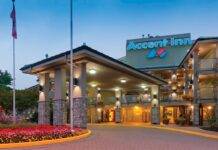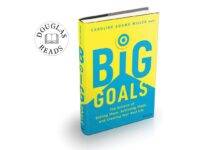
I was looking forward to reading the recently released Deloitte report, provocatively called The future belongs to the bold: Canada needs more courage.
The idea of a $38-billion global accounting firm like Deloitte commenting on a big idea like courage is seductive. I loved the company’s 2012 report Scaling Edges, so this time I lit the hearth, poured a wee dram and settled in for a good read.
Boy, was I disappointed.
Between the scolding tone in a document three times too long, the report was a struggle. Deloitte also failed to show a causal relationship between the performance of Canadian business and a lack of courage. Thank goodness for the whisky.
For all that, the report raises valid red flags. First among those is risk aversion among Canadian small-business owners.
A couple of years ago I facilitated a series of sectoral round tables for a mid-sized B.C. city. One of the sectors was main-street retail. The day was depressing. We spent the morning listening to business owners complaining about employees, competitors, suppliers, government (at every level) and even customers.
In fact, it was customers who took the biggest hit: “Why don’t they shop local? Why do they buy online? Why don’t they support us?”
The four facilitators and advisers in the room tried to nudge the owners from blame to change. We talked about taking risks, investing in new technologies, new ways of thinking. But they weren’t buying it.
Yes, change is risky and blame is safe.
We can’t guarantee new management practices will grow our businesses. We can’t guarantee investigating new markets in social marketing, app-based customer support or e-commerce platforms will grow our businesses.
We can, however, guarantee that if we don’t take risks, business will stagnate or fail. Competitors will delight our customers with better-trained staff or more helpful websites. Growth will stall because we are working in a saturated market. We simply can’t grow without risk.
Learn to Say Yes
As Amazon CEO Jeff Bezos said, “recognize that there are times when you can’t put a toe in the water; you have to leap in with both feet. You have to say, ‘This is going to be expensive — and that means we’re going to have to make it work’ … It’s the institutional yes.”
Meaningful growth and meaningful risk are positively correlated.
A meaningful risk is one taken for a purpose, such as romantic relationships, travel or personal or business growth. None of these are possible without meaningful risk.
To grow, we have to say yes when it feels like saying no is the safe thing to do.
The Runway to Risk
Like courage, risk is a big idea, not just a widget or an app. Courage and risk are words we use when we are changing the world. They are the blue sky of tomorrow, and to get there business owners need to say yes far more often than they do now, particularly in these two areas:
Investing in talent. You don’t grow a business without talent. This means recruiting talent before we think we can afford it — when it still feels risky.
Investing in new markets. Canadian companies are actually bigger exporters than U.S. firms (10 per cent versus 4 per cent), but our micro-SMEs are vastly outpaced by our mid-sized SMEs when it comes to exporting.
To jump from being a self-employed micro-SME to an independent enterprise, venturing outside the immediate market is a risk these Canadian companies must consider.
Calculating the Real Risk
When is the right time to take a risk? Probably sooner than you’d think. And often the risk isn’t what we think it is either, so the question to ask is not just “Do I have the resources to survive if this risk fails?” but “Do I have the resources to deliver if this succeeds?”
The difference matters because risk feels different if we are calculating capacity for growth rather than hedging against failure. Playing to win is a different game than playing not to lose.
Sometimes conditions are not right for a risky investment, but in my experience this is only true a fraction of the time. “Not ready” is more often a rationalization than a rational position.
Here’s how to decide if the time is right:
Listen for qualifiers. If you’re saying to yourself “We’re ready to try this but …” then there’s a good chance you’re ducking reasonable risk. If you’ll be ready next week, you are probably ready today. Delete the qualifiers and jump.
Follow Dr. Apgar. In 1953, Dr. Virginia Apgar formalized a test for newborns’ health. No Big Data, no regression analysis, nothing fancy: just five basic variables and three simple scores (0, 1, 2). Her test improved infant mortality rates worldwide. So when you are assessing risk, create a simple test. Write out five or six independent variables, and rate each on a simple 1-to-5 scale. For example: “This new product reinforces our existing line from: 1 = not at all, 5 = perfectly. Score and average the results. Don’t second-guess the answer: 4.5? Go. 3.5? Stop. Read Daniel Kahneman’s Thinking, Fast and Slow for more.
Get an outside perspective. Share your rationale and your test with someone you trust who can review the processes you are using to assess the risk, not to judge the risk itself. We’re trying to figure out if you asked the right questions, not if you got the right answer.
If you have taken steps 1 and 2 and your outsider agrees, then you’ve asked the right questions, and you know your answer. Jump.























